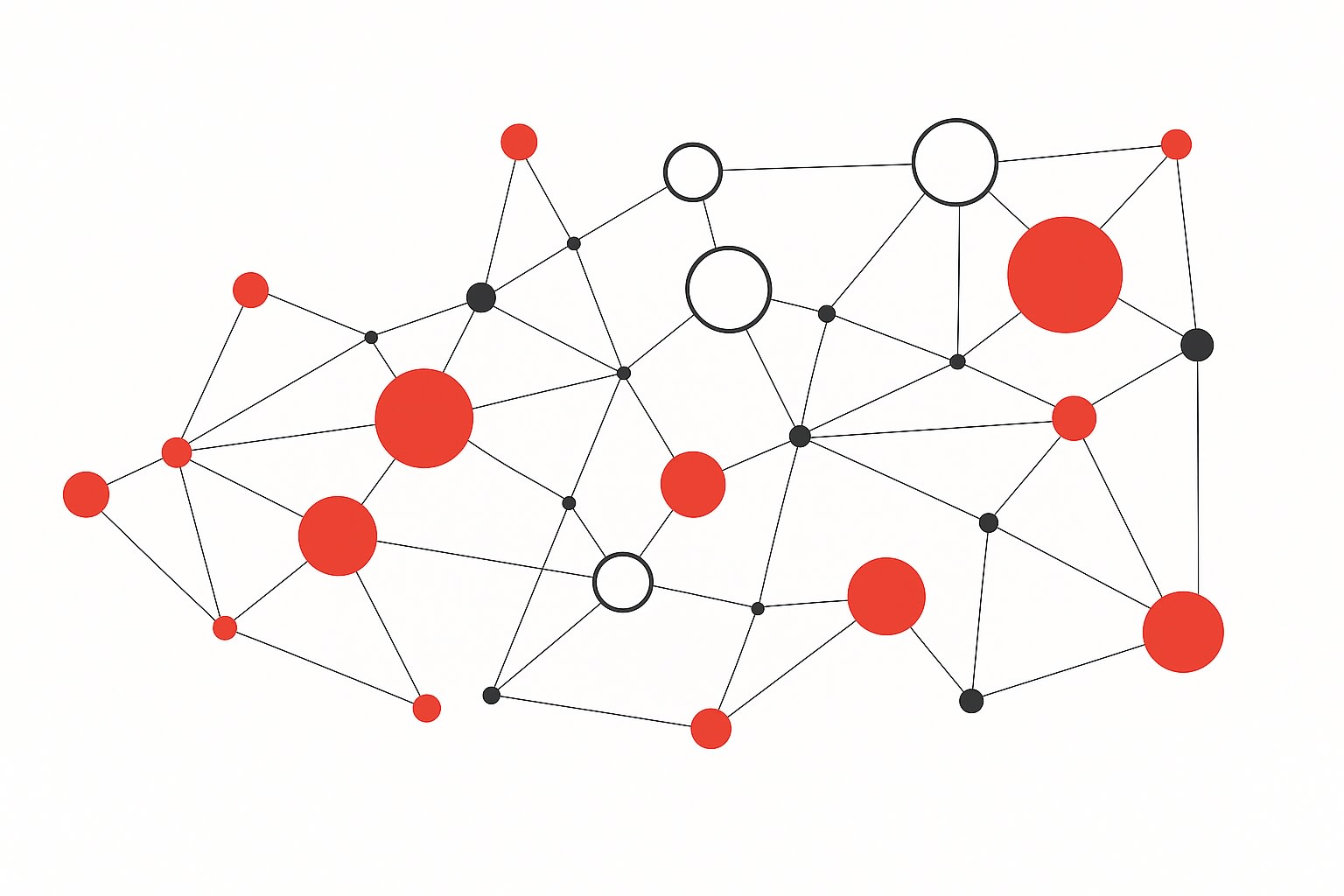Digital Experience Platforms (DXPs) promise to transform how enterprises engage with customers, streamline operations, and accelerate digital innovation. Yet most DXP implementations fall short of their ambitious goals, leaving organizations with fragmented systems, spiraling costs, and missed opportunities. The root cause isn't poor strategy or inadequate technology. It's a fundamental architectural choice that determines success or failure from day one.
A monorepo (short for “monolithic repository”) is a single codebase where all components and teams work together, allowing shared testing, integration, and development.
A monorepo isn't just a nice-to-have for your DXP. It's the foundation that determines whether your platform will scale effectively or collapse under its own complexity. Without this architectural backbone, even the most well-intentioned DXP initiatives are destined to become expensive cautionary tales.
How late integration kills DXPs
Everyone blames complexity for failed DXPs. When components are developed in isolation and integration happens late in the cycle, teams discover fundamental incompatibilities, architectural misalignments, and dependency conflicts that require expensive rework or complete rewrites.
This problem becomes exponentially worse in DXP contexts. A modern DXP touches every aspect of digital experience: content management, commerce, personalization, analytics, and customer data. When these components are developed as separate micro frontends or disparate systems, integration becomes a nightmare of API versioning, data synchronization, and workflow orchestration.
Micro frontends, often pitched as a solution to enterprise complexity, actually amplify these problems. Each micro frontend becomes a silo with its own development lifecycle, deployment schedule, and architectural assumptions. Teams lose visibility into how changes ripple across the platform. Dependencies become implicit and undocumented. What should be a cohesive user experience fragments into a collection of loosely connected applications. Without early integration, your time-to-market suffers and customer experience consistency deteriorates.
A monorepo solves this by making integration continuous and explicit. When all components live in the same repository, changes to shared dependencies trigger immediate testing across all affected modules. Architectural decisions are visible to all teams. Integration happens with every commit, not at the end of lengthy development cycles.
The financial case for monorepos
The financial impact of architectural choices in DXP development is staggering. Organizations implementing monorepo strategies consistently report 40-50% reductions in development and design costs compared to siloed approaches. This is the direct result of eliminating redundant work, reducing integration friction, and enabling true component reusability.
Consider a typical enterprise DXP with components for product catalogs, user authentication, content management, and checkout flows. In a micro frontend architecture, each team builds its own loading states, error handling, form components, and navigation elements. The same design problems get solved multiple times, often inconsistently. Design systems become afterthoughts rather than foundational elements.
In a monorepo, these components become shared assets from day one. A single loading component serves all applications. Form validation logic is centralized and consistent. Navigation components evolve together, ensuring coherent user experiences. The compound effect of this reusability transforms both development velocity and cost structure.
Poor DXP architectures don't just cost more to build: they cost more to operate, maintain, and evolve. Siloed systems require separate monitoring, deployment pipelines, and troubleshooting processes. Bug fixes must be propagated across multiple repositories. Security updates become coordination nightmares.
Micro frontends: more harm than help?
While micro frontends aim to address coordination at scale, in DXP contexts they often amplify fragmentation without strict architectural discipline. These platforms suffer the accumulated cost of suboptimal decisions that make every subsequent change more difficult and expensive. Running a DXP built without monorepo discipline incurs ongoing penalties that compound over time.
Teams spend disproportionate time on coordination rather than delivery. Simple changes require updates across multiple repositories, each with its own approval process and deployment schedule. Feature development stalls while teams negotiate API contracts and integration points. Performance optimization becomes nearly impossible when different teams control different parts of the user experience.
A monorepo eliminates these friction points by creating a unified development environment. Teams can make changes across the entire platform in a single pull request. Dependencies are explicit and automatically validated. Refactoring becomes safe and efficient because the entire codebase can be analyzed and updated atomically.
This operational efficiency directly impacts business outcomes. Faster iteration cycles mean quicker responses to market opportunities. Consistent user experiences drive better engagement metrics. Simplified deployments reduce the risk of revenue-impacting outages.
Why monorepos are becoming the standard for AI-native architectures
As artificial intelligence becomes integral to digital experiences – from personalization engines to automated content generation – the underlying platform architecture becomes even more critical. AI systems require structured, predictable environments to function effectively. They need to understand data flows, component relationships, and system boundaries to make intelligent decisions.
A monorepo provides the rationalized experience layer that AI systems need to operate effectively. When all components follow consistent patterns and interfaces, AI can reason about the entire platform. Machine learning models can optimize across the complete user journey rather than individual micro frontend silos.
Without this structural foundation, AI implementations become fragmented and ineffective. Personalization engines can't coordinate across different frontend teams. Content optimization happens in isolation from commerce experiences. The promise of intelligent, adaptive digital experiences remains unfulfilled because the underlying architecture can't support system-wide reasoning.
Learning from market leaders
Companies like Vercel, Shopify, and Google have adopted monorepo-first strategies. Tools like NX have emerged specifically to address the challenges of managing large-scale frontend monorepos. Vercel's development platform is architected around monorepo workflows, recognizing that successful DXPs require unified development environments.
Organizations attempting to scale DXPs without monorepo discipline consistently hit walls around coordination, consistency, and complexity management. The most successful implementations invariably consolidate around monorepo approaches as they mature.
Companies that embrace monorepo architectures build more scalable, maintainable, and future-proof digital platforms. Those that don't find themselves trapped in increasingly complex coordination challenges that ultimately limit their ability to compete effectively.
The Strategic Risk of the Status Quo
Many enterprise technology decisions are driven by risk aversion rather than strategic opportunity. Teams choose "safe" approaches that seem less disruptive in the short term but create substantial long-term liabilities. Micro frontends and siloed development often seem safer because they don't require organizational change, but they systematically undermine the platform's potential for success.
The irony is that these seemingly conservative choices are actually the riskier path. Fragmented architectures have higher failure rates, greater operational complexity, and more limited ability to adapt to changing requirements. They create technical debt that becomes increasingly expensive to resolve over time.
Organizations following this path often find themselves repeating previous failed initiatives. The same coordination problems emerge. The same integration challenges surface. The same cost overruns occur. The monorepo represents a departure from these predictable failure patterns toward architectures that enable sustained success.
Building for the Future
The next generation of digital platforms will be intelligent, cohesive, and adaptive. Digital experiences will continue to become more complex, more personalized, and more integrated with AI systems. The platforms that thrive will be those built on architectural foundations that support this evolution.
A monorepo doesn't guarantee DXP success, but its absence almost certainly guarantees failure at enterprise scale. The strategic risks of alternative approaches are too high to accept. Those that don't embrace the architectural discipline necessary to build world-class digital experiences will find themselves needing to explain why their ambitious DXP initiatives became expensive lessons in the importance of foundational architectural decisions.





